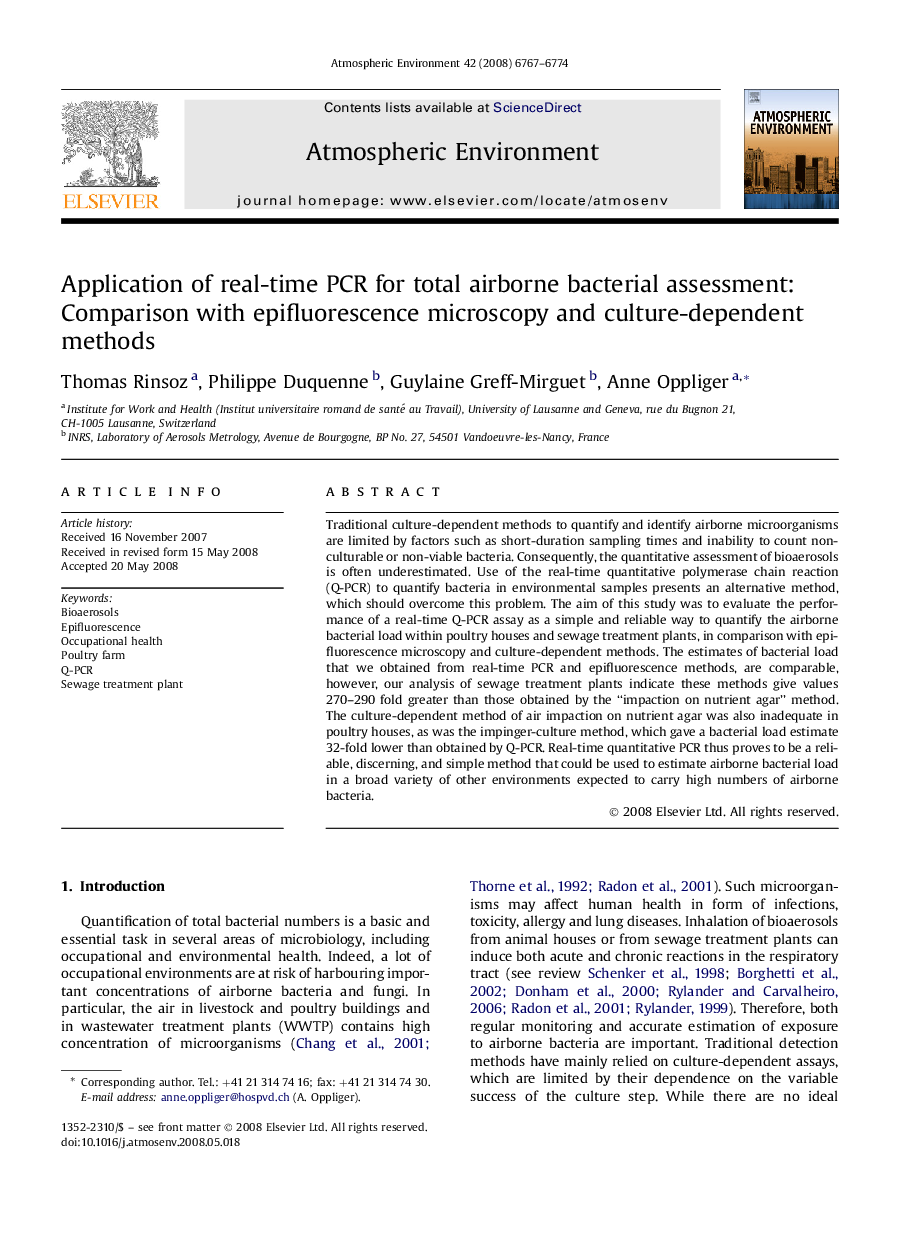| Article ID | Journal | Published Year | Pages | File Type |
|---|---|---|---|---|
| 4441776 | Atmospheric Environment | 2008 | 8 Pages |
Traditional culture-dependent methods to quantify and identify airborne microorganisms are limited by factors such as short-duration sampling times and inability to count non-culturable or non-viable bacteria. Consequently, the quantitative assessment of bioaerosols is often underestimated. Use of the real-time quantitative polymerase chain reaction (Q-PCR) to quantify bacteria in environmental samples presents an alternative method, which should overcome this problem. The aim of this study was to evaluate the performance of a real-time Q-PCR assay as a simple and reliable way to quantify the airborne bacterial load within poultry houses and sewage treatment plants, in comparison with epifluorescence microscopy and culture-dependent methods. The estimates of bacterial load that we obtained from real-time PCR and epifluorescence methods, are comparable, however, our analysis of sewage treatment plants indicate these methods give values 270–290 fold greater than those obtained by the “impaction on nutrient agar” method. The culture-dependent method of air impaction on nutrient agar was also inadequate in poultry houses, as was the impinger-culture method, which gave a bacterial load estimate 32-fold lower than obtained by Q-PCR. Real-time quantitative PCR thus proves to be a reliable, discerning, and simple method that could be used to estimate airborne bacterial load in a broad variety of other environments expected to carry high numbers of airborne bacteria.
